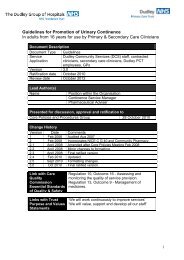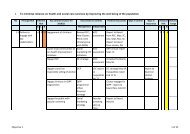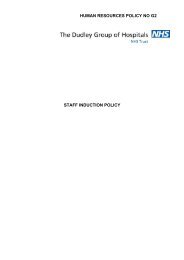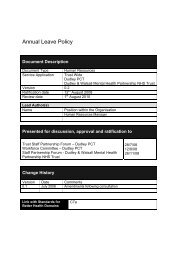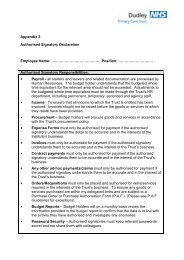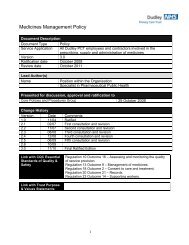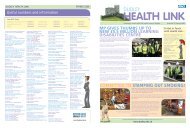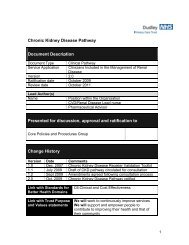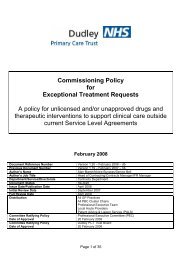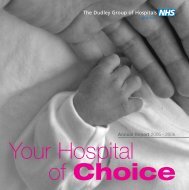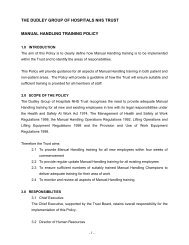Dudley Strategy for Tackling Health Inequalities 2010-15
Dudley Strategy for Tackling Health Inequalities 2010-15
Dudley Strategy for Tackling Health Inequalities 2010-15
- No tags were found...
Create successful ePaper yourself
Turn your PDF publications into a flip-book with our unique Google optimized e-Paper software.
7.8 OTHER CONTRIBUTORY CAUSESExternal causes of deathWhere are we and what are the gaps?The external causes of death are defined as those from injury and poisoning andthey account <strong>for</strong> less than 5 per cent of all deaths in England and Wales (3.5% in2008, Vital Statistics). In <strong>Dudley</strong> <strong>for</strong> the same period 1.5% of deaths were due toinjury and poisoning. Deaths from injury and poisoning account <strong>for</strong> nearly half of alldeaths in the <strong>15</strong>-34 age group <strong>for</strong> England and Wales (48.4% in 2008) and 21.4% inthe same age group in <strong>Dudley</strong>. This proportion is significantly higher in men thanwomen. There<strong>for</strong>e deaths from injury and poisoning have a large impact in terms ofpremature deaths and potential years of life lost. In addition to this there isconsiderable research in the literature confirming that the risks of both unintentionaland intentional injury are related to deprivation status, with those at the greatest riskliving in the most deprived areas (Laflamme, Burrows and Hasselberg, 2009).Deaths from injury and poisoning make a significant contribution to the gap seen inlife expectancy between the most and least deprived quintiles in <strong>Dudley</strong> (LHO,<strong>2010</strong>). The estimated life expectancy years gained (2001-2005) if the Most DeprivedQuintile (MDQ) of <strong>Dudley</strong> MCD had the same mortality rate as the least deprivedquintile in the local authority <strong>for</strong> external causes are 1.09 years (16.6%) <strong>for</strong> men and0.03 years (0.8%) <strong>for</strong> women.Figures 1-2 show the trend in mortality from accidents and suicides andundetermined injuries <strong>for</strong> <strong>Dudley</strong> and England and Wales. Five year rates areshown due to the relatively low numbers. For accidents the directly standardisedmortality rates in <strong>Dudley</strong> over the last 20 years have been below those <strong>for</strong> Englandand Wales, but in the last five years <strong>Dudley</strong> has seen a rise in the rate of deathsfrom accidents and now has mortality rates equivalent to England and Wales.<strong>Dudley</strong> is no longer on target to meet “Our <strong>Health</strong>ier Nation” target of a 20%reduction on the 1996 baseline by <strong>2010</strong>. Directly standardised mortality rates <strong>for</strong>suicides and undetermined injury have declined over the last 20 years and havecontinued to track levels <strong>for</strong> England and Wales. The target reduction has been met<strong>for</strong> women but is unlikely to be achieved <strong>for</strong> men. Mortality rates both from accidentsand suicide and undetermined injury are higher in men than women.There is a strong gradient of deprivation <strong>for</strong> mortality from both accidents and suicideand undetermined injuries particularly <strong>for</strong> men as shown in Figures 3-4 respectively.To further understand the data it has been further analysed using the InternationalCollaborative Ef<strong>for</strong>t (ICE) on injury statistics matrix which classifies injury andpoisoning deaths according to both mechanism and intent using standard groups ofthe ICD codes (ONS, 2006).<strong>15</strong>4




